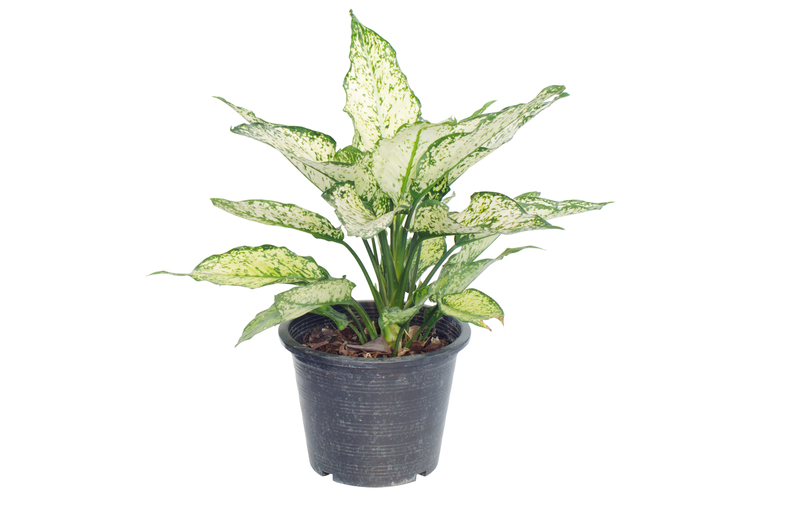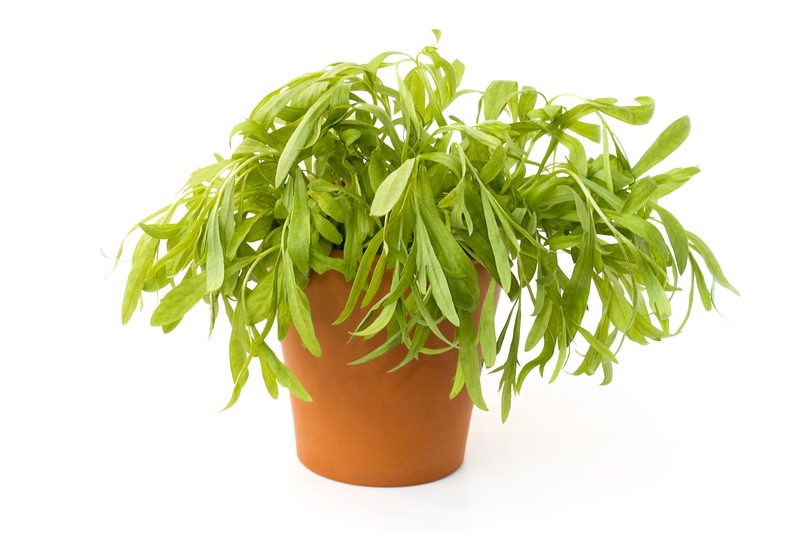Cultivating Change: Gardening's Role in Climate Solutions
Posted on 12/09/2025
Cultivating Change: Gardening's Role in Climate Solutions
Amidst the escalating concerns about climate change, individuals and communities seek innovative, meaningful ways to reduce their environmental impact. One powerful, accessible solution lies right outside our doors: gardening. By nurturing plants and landscapes, people contribute to the global fight against climate change. This comprehensive guide explores how gardening supports climate solutions, practical strategies to maximize its benefits, and the transformative impact of green spaces on communities and the planet.
Understanding Climate Change and Environmental Challenges
Climate change refers to significant, long-term shifts in weather patterns, largely propelled by excess greenhouse gas emissions from human activities. Increasing global temperatures threaten ecosystems, food security, weather stability, and air quality. Individuals often feel powerless against such massive challenges. However, small-scale actions, such as gardening for climate solutions, can aggregate into meaningful systemic change.
- Carbon emissions: Burning fossil fuels for energy, transportation, and agriculture releases overwhelming amounts of CO2 and methane.
- Deforestation: Forest loss reduces the Earth's capacity to absorb and store carbon.
- Soil degradation: Industrial agriculture and poor land management diminish soil health and biodiversity, intensifying carbon release.
Why Gardening Matters for the Environment
Gardening's environmental benefits are often underestimated. Beyond beauty and recreation, gardens provide essential ecosystem functions:
- Capture and store atmospheric carbon dioxide.
- Increase biodiversity with habitat for pollinators and wildlife.
- Improve air and water quality by filtering pollutants.
- Cool urban spaces and combat the urban heat island effect.
- Promote healthy, local food systems and reduce transportation emissions.
Each garden, whether a single balcony pot or a community allotment, offers a meaningful contribution to climate change mitigation.

The Science: How Gardens Support Climate Solutions
How does gardening play a role in climate solutions? The answer lies in several interconnected processes.
Carbon Sequestration in Gardens
Carbon sequestration is the process by which plants absorb CO2 from the atmosphere and lock it within their tissues and the soil. Trees, shrubs, and even small vegetables capture carbon during their growth, transforming gardens into natural carbon sinks. Healthy, organic soils enriched by compost and mulch store even more carbon over time.
- Planting perennial species increases long-term carbon storage.
- Cover crops and no-dig techniques retain soil carbon and prevent erosion.
- Integration of trees (agroforestry) into working landscapes magnifies carbon sink capacity.
Biodiversity in the Garden: Building Resilient Ecosystems
Biodiversity is crucial for healthy, climate-resilient gardens. Native plants, a mix of flowers, herbs, and vegetables, and the inclusion of hedges and trees create complex ecosystems. Such diversity reduces pest outbreaks, supports pollinators, and fosters soil health through rich microbial communities. More biodiversity means greater resilience to extreme weather and reduced need for chemical inputs, both essential for sustainable gardening for climate change solutions.
Soil Health and Regenerative Gardening
Soil acts as a hidden hero in the fight against climate change. Regenerative gardening practices, like minimal tillage, composting, and cover cropping, restore and maintain organic matter in soils. This fortifies their structure, promotes water retention, and boosts their ability to store carbon. Healthy soil also reduces runoff, filters pollutants from rain, and sustains plant life even in challenging environments.
Climate-Friendly Gardening Techniques
Optimizing your garden for environmental impact involves intentional choices and practices designed to maximize ecological benefits and minimize harm. Below are proven techniques to cultivate a climate-beneficial landscape.
Plant Trees and Shrubs
- Choose native, climate-adapted species to ensure long-term survival and ecological compatibility.
- Multi-story planting--combining tall trees, mid-canopy shrubs, and ground covers--amplifies carbon capture and habitat diversity.
- Trees provide shade, reduce energy use for cooling, and offer food and shelter for wildlife.
Compost and Mulch
- Composting diverts organic waste from landfills, reducing methane emissions and returning nutrients to the soil.
- Mulching conserves soil moisture, moderates temperature, and further enhances soil carbon content.
Adopt Water-Wise Gardening
- Incorporate drought-tolerant and native plants to reduce irrigation needs.
- Cultivate rain gardens and collect rainwater to manage stormwater runoff and recharge local aquifers.
- Use drip irrigation for targeted watering and efficiency.
Reduce Chemical Use
- Avoid synthetic fertilizers and pesticides, which are energy-intensive to produce and harmful to beneficial organisms.
- Encourage natural pest predators and plant disease-resistant varieties.
Foster Urban Green Spaces
- Engage in rooftop, balcony, and vertical gardening for those with limited ground space.
- Push for community gardens and green corridors to connect fragmented habitats in cities.
The Role of Food Gardening in Reducing Carbon Footprint
Growing your own food is among the most direct ways gardens support climate action. Industrial agriculture is a major carbon emitter, consuming fossil fuels for tractors, irrigation, fertilizer production, and global transportation.
- Homegrown food travels zero miles, cutting emissions from transportation and refrigeration.
- Gardeners can adopt organic methods, further minimizing associated environmental harm.
- Seasonal eating and preserving surplus harvests reduce reliance on imported and processed goods.
By choosing to cultivate food at home or in community spaces, individuals empower themselves to make climate-smart dietary choices.
Gardening as a Community Climate Solution
Collective efforts magnify the impact of eco-friendly gardening. From school plots to large urban farms, group gardening initiatives ignite social change, improve local resilience, and build climate awareness.
- Community gardens revitalize neighborhoods, offer educational opportunities, and strengthen food security.
- Shared green spaces provide critical cooling in cities and combat heat extremes enhanced by climate change.
- Collaborative composting and seed-saving programs increase ecological literacy and self-sufficiency.
Gardening together fosters a spirit of stewardship and demonstrates that climate action is achievable at every scale.
Sustainable Gardening Resources and Innovations
Recent advances in gardening and landscape management offer even more ways to make a positive environmental impact.
Technology and Smart Gardening
- Soil sensors and moisture meters optimize watering, preventing waste.
- Mobile apps can guide plant selection and track garden carbon outputs.
- Solar-powered garden tools and lighting further reduce fossil fuel dependency.
Permaculture and Regenerative Design
- Permaculture principles focus on creating self-sustaining, closed-loop systems that mimic natural ecosystems.
- Key features include edible forests, perennial crops, companion planting, and wildlife integration.
- Such systems require less input, support greater biodiversity, and lock in more carbon over decades.
Green Roofs and Living Walls
- Installing plants on rooftops and building facades improves insulation, reduces energy use, and provides new habitat for pollinators.
- Urban areas benefit significantly from these adaptations, which lessen the urban heat island effect and intercept airborne pollutants.
Gardening for Climate Adaptation
While gardens mitigate climate change, they also help communities and ecosystems adapt to its impacts.
- Tree canopies reduce local temperatures and shield against strong winds.
- Rain gardens absorb excess water, reducing floods during extreme rainfall.
- Diverse plantings ensure continued harvests despite changing seasonal patterns.
- Supporting pollinator diversity is critical as flowering schedules shift with warming temperatures.
Challenges and Considerations for Climate-Conscious Gardeners
While gardening offers myriad climate benefits, certain practices can unintentionally worsen climate impacts. Conscious gardeners should avoid:
- Using peat-based compost, as peat extraction releases significant stored carbon.
- Over-irrigation and excessive fertilizer use, which can lead to water and air pollution.
- Planting invasive species that may displace local flora and fauna.
- Removing or burning green waste rather than composting it onsite.
Strive to adopt a holistic, regenerative approach to maximize your garden's climate contribution.
Gardening's Social and Psychological Role in Climate Solutions
Gardening is not only an ecological act, but also a transformative social movement. It connects people with the land, promotes physical and mental well-being, and encourages lifelong learning about nature and sustainability. By empowering individuals to take meaningful action in the face of climate anxiety, gardening fosters hope and resilience.
- Green spaces lower stress levels, encourage outdoor activity, and foster intergenerational connections.
- Educating children in the garden sows seeds for future climate stewardship.
- Community involvement breaks down barriers to environmental action and promotes inclusivity.
When people witness the results of their care--whether lush growth or abundant harvest--they develop a lasting commitment to the environment.

Getting Started: Action Steps for Gardeners
If you are inspired to join the gardening for climate solutions movement, begin with these actionable steps:
- Assess your space--balcony, backyard, rooftop, or community plot--and set realistic goals.
- Research native and climate-resilient plants suited to your local environment.
- Start composting food scraps and yard waste to build healthy soil.
- Reduce or eliminate the use of synthetic chemicals.
- Connect with local gardening groups or environmental organizations to exchange knowledge and seeds.
- Share the fruits of your labor with friends, family, and your wider community.
Even the smallest garden contributes to the broader climate solution, setting an inspiring example for others to follow.
Conclusion: Growing Hope, One Garden at a Time
In our rapidly changing world, the act of gardening stands as a powerful, accessible tool for climate-positive change. By reimagining our gardens as essential ecosystems, carbon sinks, and community spaces, we cultivate far more than vegetables or flowers--we grow hope, resilience, and solutions for a sustainable future. The collective impact of millions of gardens worldwide offers a scalable, regenerative pathway to address the climate crisis. Whether you are an experienced horticulturist or a beginner with a small balcony, your garden matters.
Let us continue cultivating change--one seed, one plant, and one community at a time--for the health of our planet and future generations.



